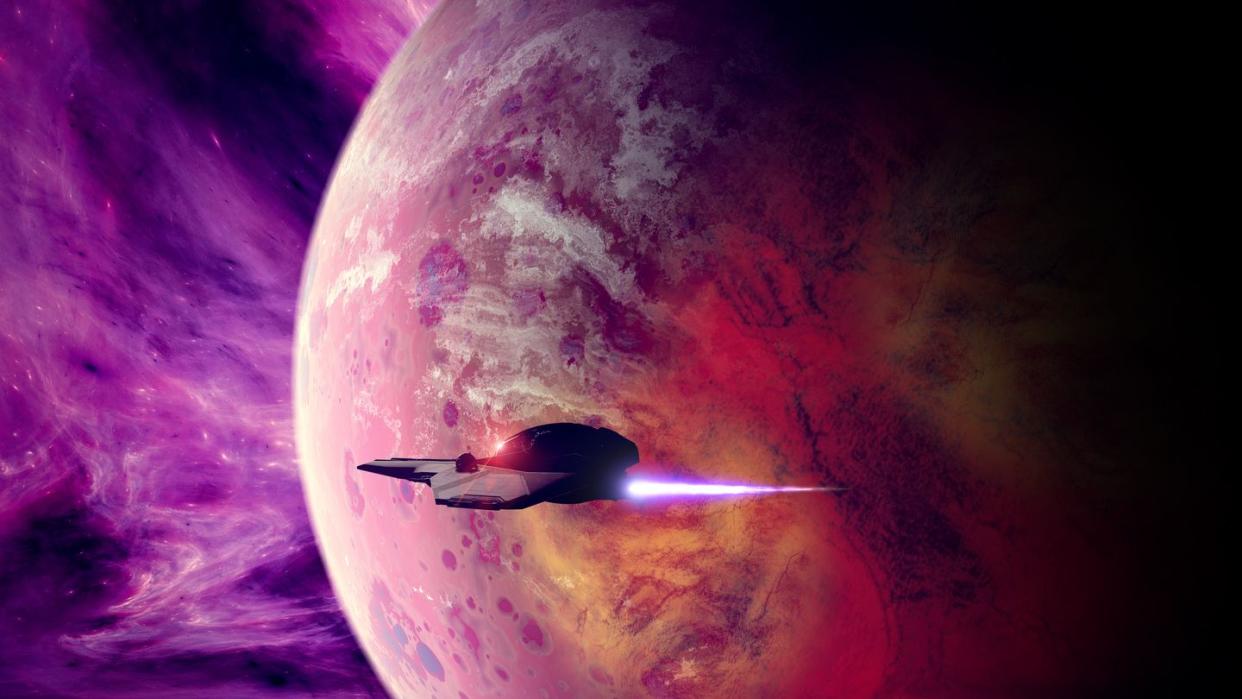A High-Energy Proton Beam Could Finally Connect Us to Proxima Centauri

The closest star to Earth, Proxima Centauri (PC), is still about 8000 times further away from us than Pluto.
Propelling a probe to PC will require a much higher cruising speed than we can currently achieve in order to get useful data.
The solution could be a proton beam, made diffraction-proof by complex algorithms.
This year, the iconic Voyager 1 probe made news—first for losing contact, and then for that contact being restored as a result of careful and incredibly long-distance repairs. From the outside (and heck, maybe the inside), this seems like a miracle. After all, Voyager 1 is approximately 15.2 billion miles from Earth. That’s more than five times the distance from Earth to Neptune. It's almost unfathomably distant.
But it’s still about 1600 times closer to us than the closest non-Sun star, Proxima Centauri (PC). It could be that the PC system is humanity’s best candidate for true habitation of a second planet, which has made it the subject of interest for decades. But at 25 trillion miles away, it’s more than a little bit out of our current reach. After all, it took Voyager 50 years to get as far away as it is.
So, in order to ever probe Proxima Centauri and its handful of exoplanets, we need a new craft-powering paradigm. And because a probe is very tiny—Voyager is about 1,500 pounds, compared to the Space Shuttle’s 4.5 million pounds at takeoff—it could be a good way to experiment with interplanetary and interstellar propulsion ideas.
In 2018, NASA’s experimental NASA Innovative Advanced Concepts (NIAC) group published a report by scientist Chris Limbach on a proton beam propulsion system. The proposed proton beam is called PROCSIMA: Photon-paRticle Optically Coupled Soliton Interstellar Mission Accelerator.
A beam might seem wild compared to the fairly routine-sounding nuclear battery that powers Voyager 1. Of course, when the Voyager crafts were being constructed in the 70s, that was also quite ‘far out’—but it worked. And while still theoretical, the beam also has benefits very grounded in real life. “Beam concepts are unique in that their propulsion capability principally derives from the separation of power and propulsion subsystems from the spacecraft itself,” Limbach wrote, “thereby liberating the propulsion dynamics from the rocket equation.”
In other words, all of the work of propulsion is being done on Earth, where the proton beam is based. As a result, the calculations around the probe spacecraft itself become less complex. Think about the probe like a baseball. For a baseball, your body swinging the bat is the propulsion system. That’s very different from a baseball you only hold in your hand until it can fly on the same trajectory but under its own power, which is the idea behind most propulsion systems. (That’s a complicated baseball that would win the science fair for sure.)
This, Limbach explains in the paper, is all pretty much old news. But something has stopped people from using Earth beams. Yes, they save complexity, but beams by nature end up diffracting—functionally the light beam equivalent of dissolving—over long distances until they’re no longer effective. That means the probe could only be powered for a certain distance before it would be on its own.
Limbach’s breakthrough in the paper, he explains, is a way to keep that beam tight, even over trillions of miles. And while Star Trek and other science fiction sometimes depicts outer space as cluttered with close-by objects, the truth is that our local space is quite empty, with a clear path from here to Proxima Centauri.
Limbach’s paper is an exploration and review of existing knowledge, with his original ideas intended to spark discussion of next steps into self-guiding (and non-diffracting) particle beams. They’re not without their own high complexity, he explains, but moving that complexity to Earth means no one will find it miraculous when the system is repaired during the probe’s journey.
“These studies did not reveal any ‘show-stoppers,’” Limbach concludes—just promising ideas that need more exploration. And as we think more and more about traveling to outer space, perhaps that work will seem more urgent again.
You Might Also Like


